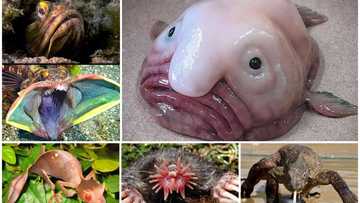What are economic trees in Nigeria?
In this article, we want to tell you about economic trees in Nigeria. This is an important forestry resource that is used in many spheres of life, it provides foods, timber, and medicines. Read on to see the examples of such trees.
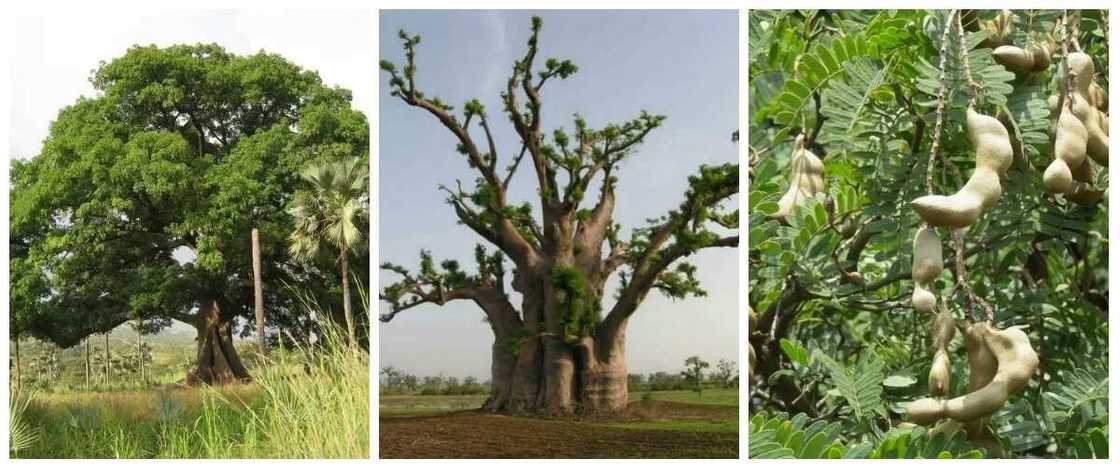
Source: UGC
List of economic trees in Nigeria
There are several types of trees in Nigeria that can be considered as economic trees because such treas are the source of food, timber, animal feed, stakes, firewood, and soil fertility restorers. Here we have the names of economic trees and their main characteristics.
Among non-food species of forest zone trees there are:
- Chlorophora excelsa
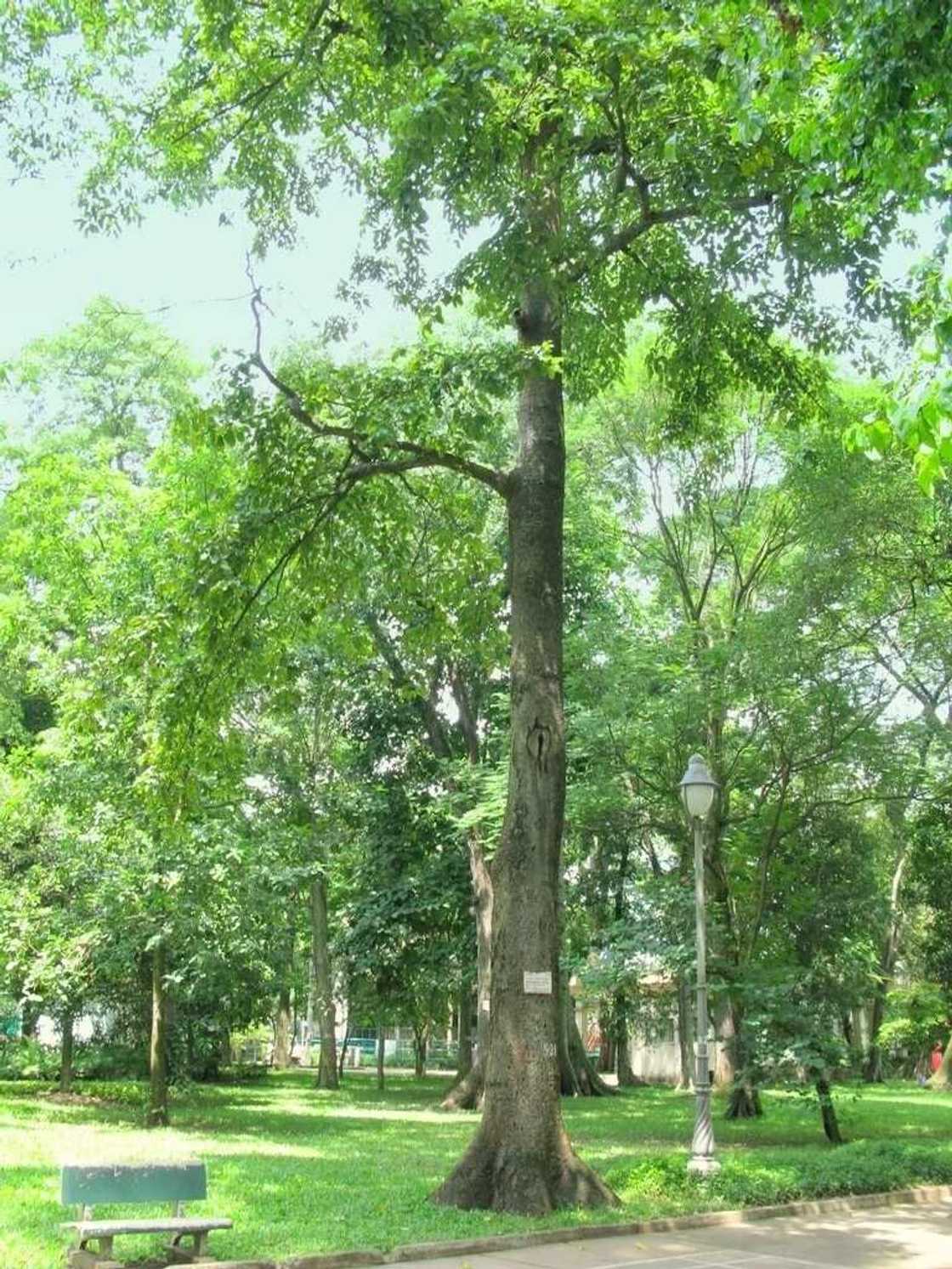
Source: UGC
Photo: foreska.com
READ ALSO: Cashew nut processing business plan
This is a type of tree from Moraceae family. The tree growths up to 50 m of high and 350 cm in trunk diameter. The trunk can be branchless and often buttressed. The crown is flat and wide. The bark is thick and pale, it produces milky latex if damaged. The leaves are long, with toothed edges. The tree gives green, wrinkled, long, and fleshy fruits. Chlorophora excelsa provides a timber known as iroko.
- Berlinia grandiflora
The tree grows up to 20 meters of height. The tree produces very fragrant, large, conspicuous flowers. It is a great source of timber. The heartwood is pinkish-brown with purple or dark brown veins and frequent resin canals.

Source: UGC
Photo: westafricanplants.senckenberg.de
READ ALSO: Top agricultural companies in Nigeria
- Anthonotha macrophylla
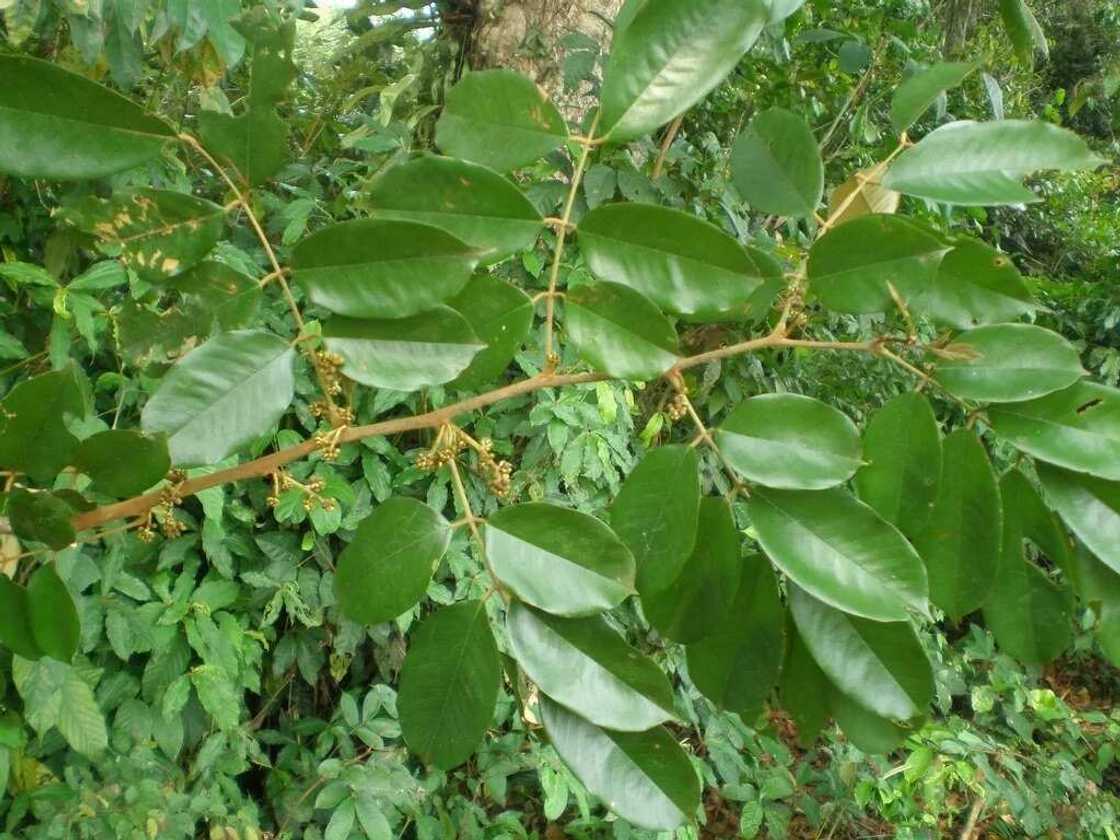
Source: UGC
Photo: tropical.theferns.info
The tree can grow up to 20 m of height. The heartwood of the tree is reddish brown. The wood is used for telegraph poles, carpentry, and tool handles. The wood is also used as firewood, and in some parts of Nigeria, it is in demand for smoking fish. In eastern Nigeria, Anthonotha macrophylla is planted to restore soil fertility.
- Alchornea cordifolia
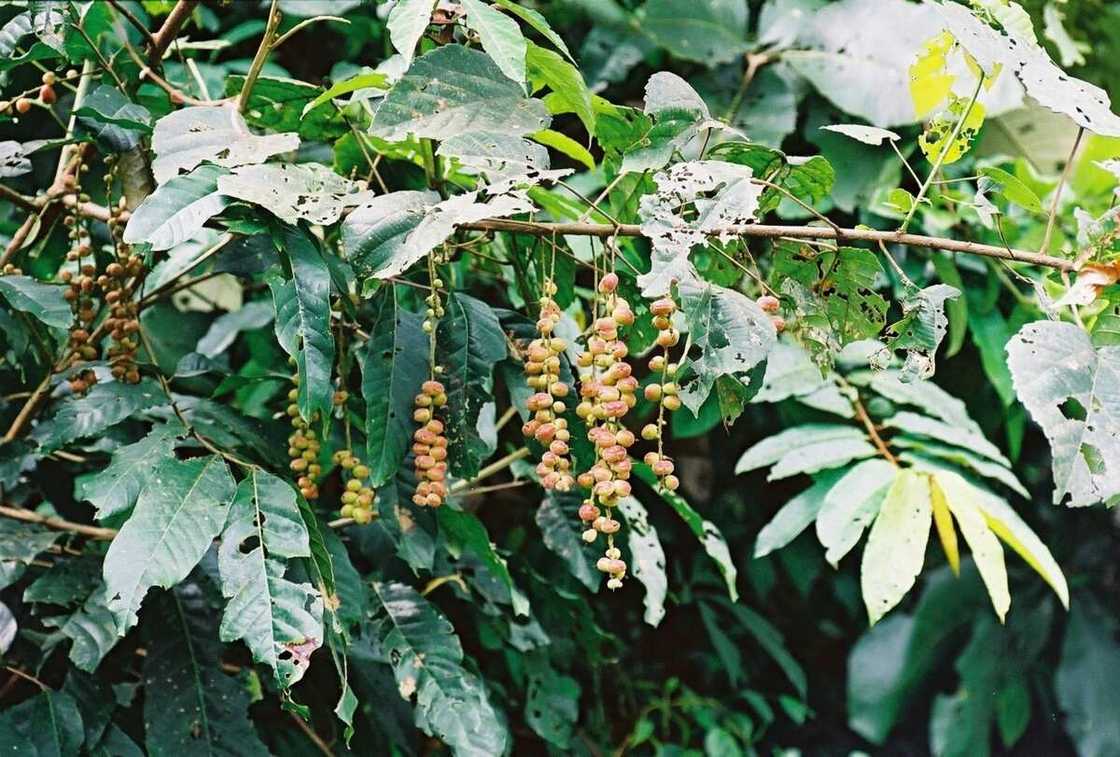
Source: UGC
This type of economic trees grows up to 8 m tall. The tree is used as a medicinal plant, the leaves contain a number of beneficial elements such as steroid glycosides, terpenoids, flavonoids, saponins, imidazopyrimidine alkaloids and so on.
Fruit and food trees of Savanna zone:
- Adansonia digitata

Source: UGC
Photo: worldofsucculents.com
The tree can reach 20 metres tall, it is a type of deciduous tree, succulent. Often it has a very sparse crowd. The tree is considered multi-purpose plant with a wide range of use. The acid pulp of the fruit is eaten and made into drinks. Edible pulp is rich in vitamin C and B2. It is used in the preparation of lemonade. The fruits sometimes used as a coffee substitute. Young leaves of the tree can be cooked and eaten, it is often used in the preparation of local dishes.
- Ceiba pentandra

Source: UGC
Photo: prota4u.org
The tree has pagoda-shaped, thin crown. It can grow even up to 70 meters. The tree has a wide range of uses, its fibre is especially valued, the tree provides foods and used in the production of medicines. The tree is widely cultivated in tropical areas. Tender leaves, buds, and fruits are eatable. Seeds can be eaten raw or cooked. The seeds are also used for extraction of cooking oil. Flowers can be eaten with chili sauce. Even wood ash of this tree is used as a salt substitute.
- Moringa oleifera

Source: UGC
Photo: survivalgardener.com
This is drought-resistant, fast-growing tree. It can reach the height of 10–12 m and 45 cm of diameter. A tree can give two harvests a year. The leaves are also very nutritious, they contain a big number of such vitamins as vitamin B, C, and K. Seeds are used in the preparation of oil.
- Tamarindus indica
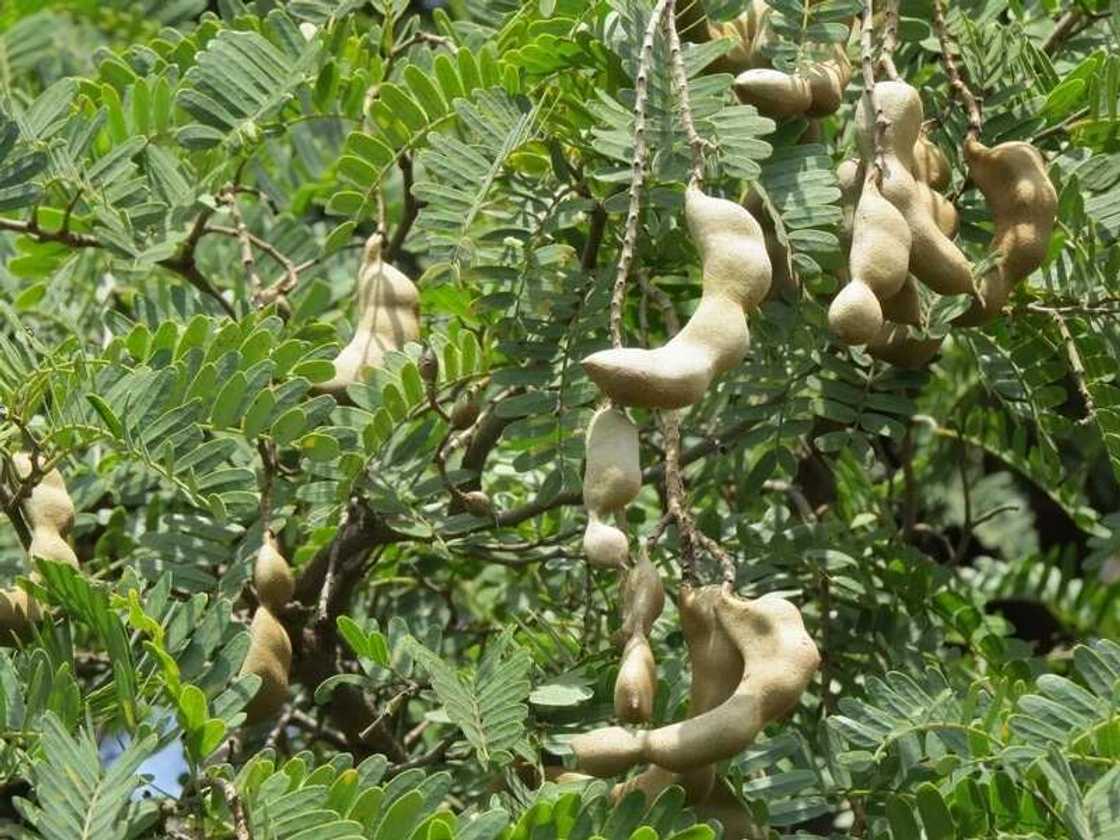
Source: UGC
Photo: westafricanplants.senckenberg.de
READ ALSO: Sectors of the Nigerian economy
The tree can grow up to 30 metres. The seedpod of the tamarind is widely used for food in the tropics. The seedpod of the tree is edible in raw or cooked form. Young leaves and flowers are also used in cookery.
Fruit and food trees of forest zone:
- Pentaclethra macrophylla
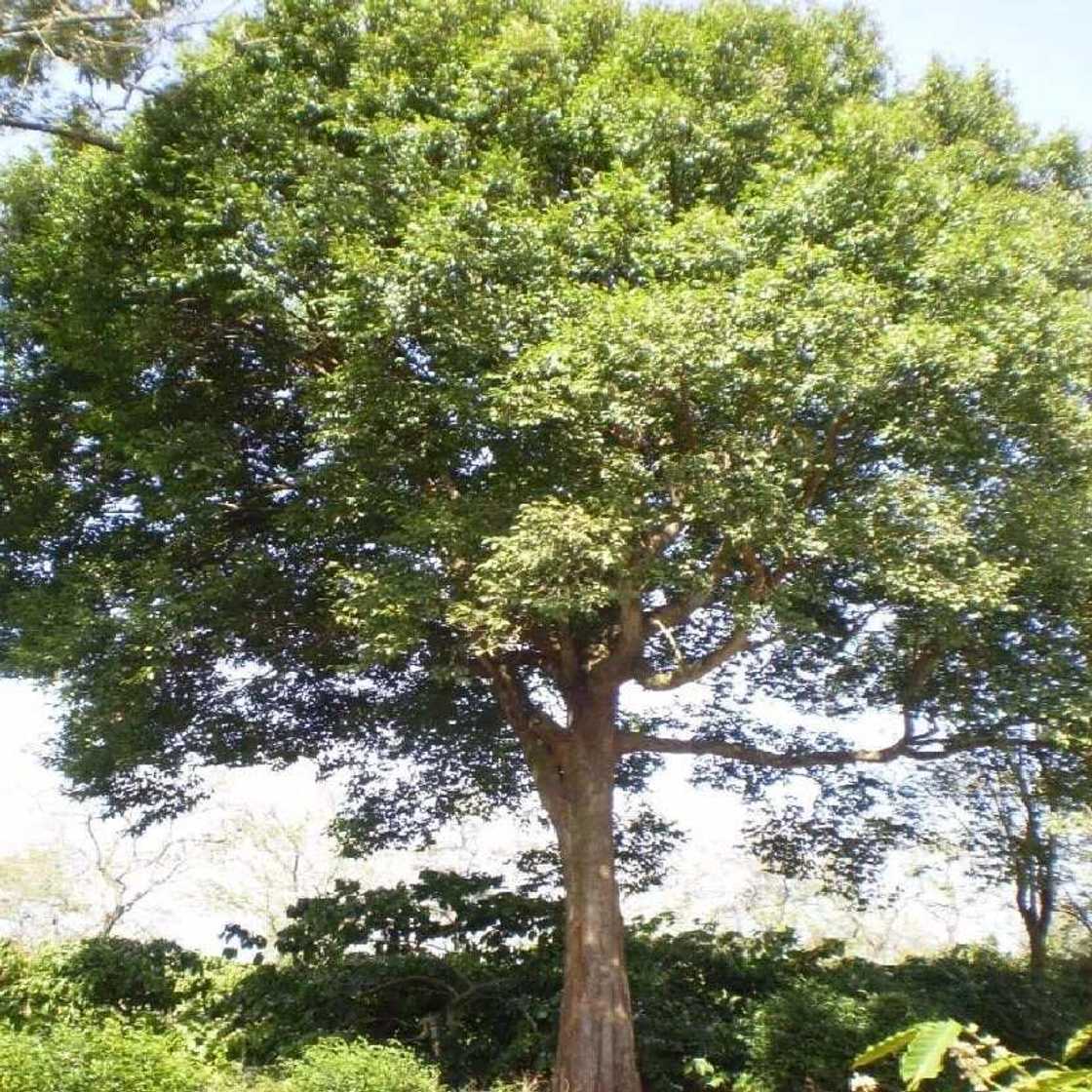
Source: UGC
Photo: inoya-laboratoire.com
The tree is from the Mimosaceae family. The seeds are eaten boiled or roasted. It is also used for the extraction of oil. The tree can grow up to 35 m tall. Pentaclethra macrophylla give the fruits at most periods of the year.
- Canarium schweinfurthii
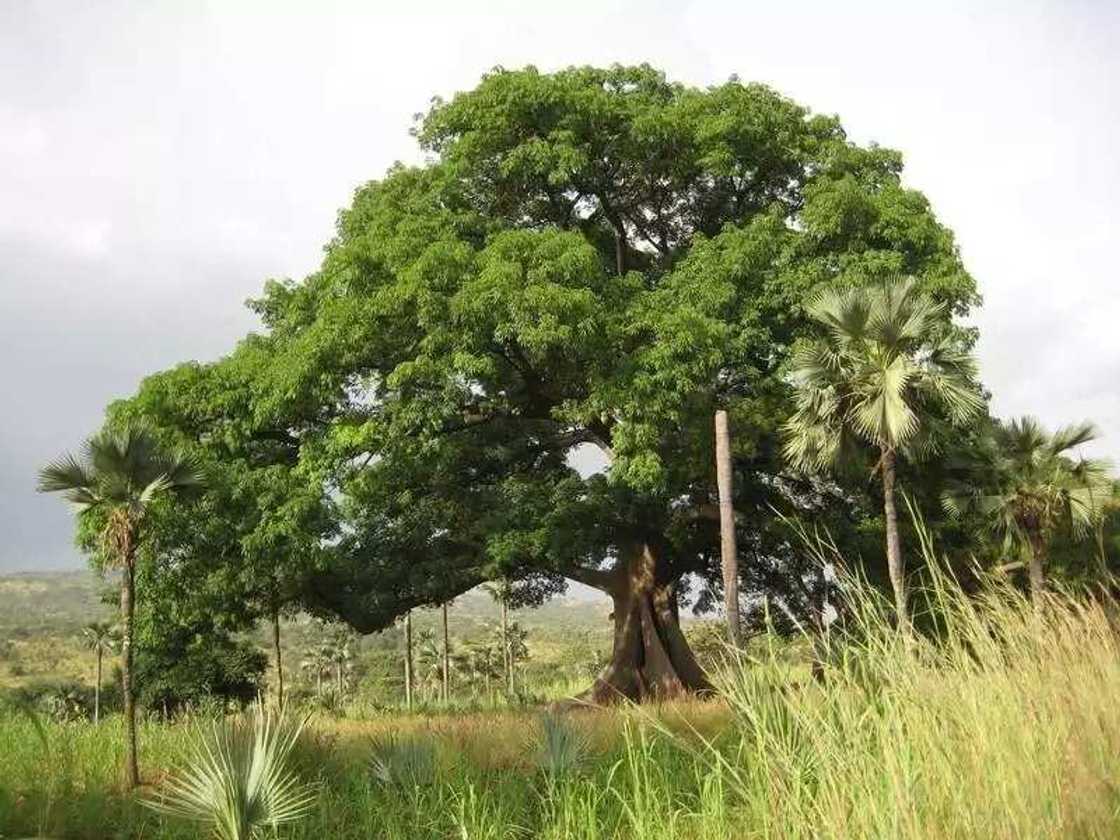
Source: UGC
Photo: tropical.theferns.info
This is a big, evergreen forest tree that can exceed 50 metres. It provides edible seeds, they are the major source of elemi, the element that is used in food, medicine and it also has some industrial applications. The fruits have slightly greenish outer pulp that is oily and edible. Fruits can be eaten raw and have the taste that is similar to olives.
- Myrianthus arboreus

Source: UGC
Photo: africanplants.senckenberg.de
The tree grows up to 10 - 20 metres. This is another multipurpose type of tree that provides a range of foods, medicines and other commodities. Even the leaves of the tree are used as food, they are cooked and used in vegetable-soups. Fruits can be eaten raw, the seeds are also used in cookery.
- Afzelia belle

Source: UGC
It growths from 2.5 to 11 metres of hight. It is used in the production of valuable timber, foods, and medicines. Fruit are eaten in raw form, tender young leaves are also used in cookery. The tree is valued for the production of medicines to treat venomous stings, bites, etc.
- Dialium guineense

Source: UGC
Photo: forestcenter.iita.org
The tree grows up to 30 metres. The fruits are popular local food, the tree is also used as a source of useful timber. Fruits are edible in raw or cooked form. The bark and leaves of Dialium guineense are used in the production of several medicines.
Here are the examples of economic trees of Nigeria at the present time. Trees and forestry always was an integral part of a farming system in Nigeria. It always a part of food production and an important part of agriculture.
READ ALSO: Top soil fertility test methods
Source: Legit.ng



